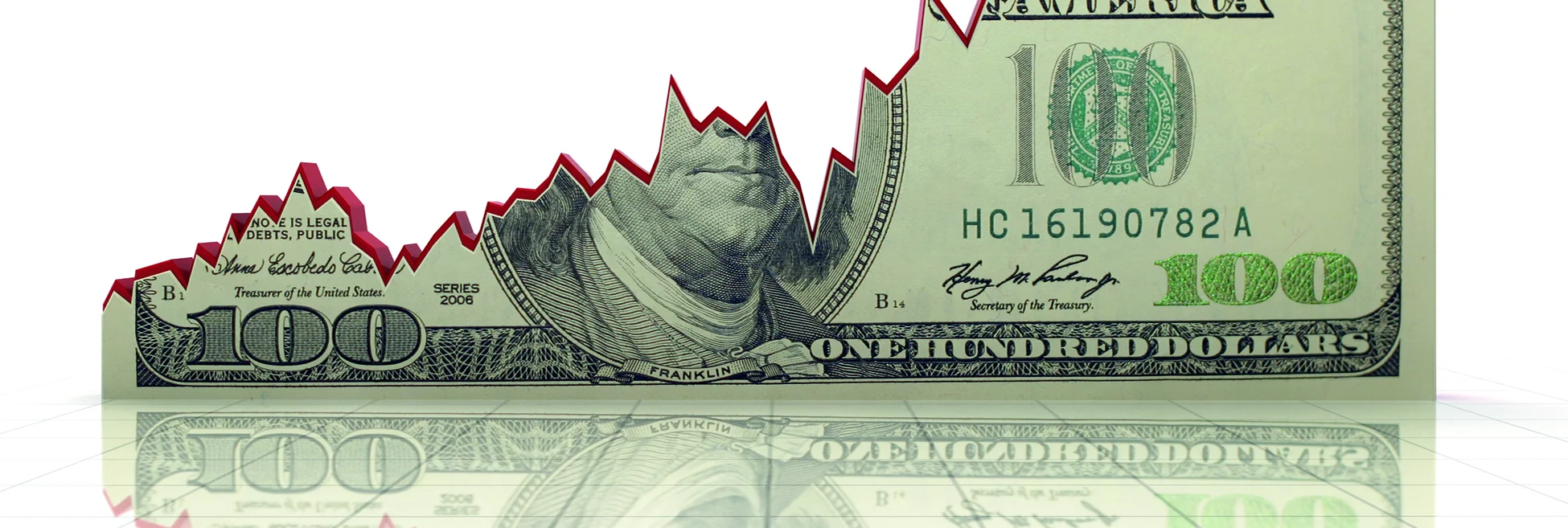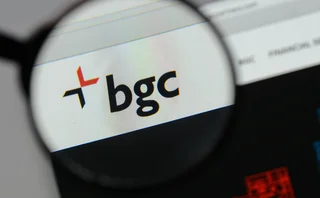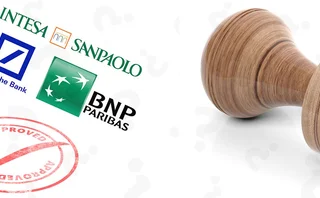

Inflation scenarios: tail risks loom for US equities
Portfolios could lose more than one-third of their value if inflation stays high, suggests crowdsourced scenario exercise
Need to know
- The creeping impact of higher inflation could explode into a full-blown market rout if central banks are forced to make early, rapid interventions to curb rising prices, according to an analysis based on projections from Risk.net readers.
- Taking the views of 100 individuals, Risk.net and Sapiat have constructed a series of stress scenarios that showcase the impact of moderate and high inflation on a dummy investment portfolio.
- Almost all asset classes are vulnerable in the event of peak inflation rising above 5%, with bonds and equities taking a hammering.
- Only commodities and Chinese equity investments offer limited respite, generating a positive return in a high-inflation scenario.
This article forms part of Risk.net’s series of crowdsourced scenario-generation exercises. Click here to download a PDF of the full results.
It’s mid-December 2021. Inflation is through the roof, and goodwill is thin on the ground. Major economies are reeling from a sustained period of rapidly rising prices, with the annualised US consumer price index (CPI) jammed above 4.5%. Central bankers are talking openly of rapid early rate rises in the new year, signalling a short, sharp end to the period of extraordinary monetary easing ushered in by the coronavirus.
The looming spectre of early interest rate hikes sends global markets tumbling. Investors, reeling from a grim winter of supply chain shortages hitting everything from microchips to meat packaging, begin yanking funds from equities and bond holdings alike, with US equities leading the way.
During the third quarter of 2021, Risk.net asked roughly 100 readers what they thought would happen to a series of leading financial indicators under three different regimes: low, moderate and sharp inflation. The responses were processed by analytics firm Sapiat to assess how an illustrative portfolio invested in a wide range of asset classes globally would perform in each scenario.
In the sharp inflation scenario, almost every asset class is in the red, with the exceptions of commodities, hedge funds and Chinese equities. The portfolio loses 6.24%, with annualised volatility of 13.67% (see table A).
But that’s just the headline loss. Dig deeper, and there are wide differences of opinion: the five most bearish respondents expect portfolio returns to be negative in all three inflation regimes (see table B). Even across all views, by one tail measure – the portfolio’s six-month expected shortfall – under this scenario, US equities could stand to lose 10.8%. The portfolio as a whole is seen shedding more than one-third of its value.
That should not come as a surprise. After decades of controlled inflation, there is little consensus on how markets will respond to a period of surging prices and the threat of stagflation.
“We haven’t seen a situation like this in more than 50 years – so how do you make a reasonable forecast?” asks Andrew Chin, global head of risk management, quantitative research and data science at AllianceBernstein.
Risk.net’s crowdsourced scenario exercise attempts to tackle this problem. During periods of pervasive uncertainty, when backward-looking risk models are rudderless, the traditional fallback is to ask small groups of in-house experts for their judgement on how bad things could plausibly get. In this context, asking a large number of people how bad they expect things to get is seen by respondents as a reasonable exercise.
“There is value in [crowdsourced stress scenarios] because they force me to rethink whether my own stress scenarios are enough: I think that’s helpful,” says Chin.
As expected, the illustrative portfolio performs best when inflation is under control, with a projected gain of 10.41% on an annualised basis, with the equity allocation contributing roughly two-thirds – or 7% – of the upside. US government bonds are the only losing investment in this scenario. As inflation rises, portfolio returns drop to 5.49% and volatility increases, especially in the equity allocation. All bonds underperform in this regime.
For each of the three regimes – steady, moderate and sharp inflation – readers were asked to forecast the movement of several benchmarks between the start of the third quarter and December 31, 2021. The indicators are: the S&P 500; the Euro Stoxx 50; the euro-US dollar exchange rate; the US 10-year Treasury yield; and the US Federal Reserve’s targeted base rate.
Those predictions were aggregated and used to feed Sapiat’s model, with the impacts of the regimes simulated on an illustrative portfolio containing a wide range of asset classes including equities, bonds and commodities, as well as smaller allocations to alternatives. US equities make up 20% of the portfolio; Europe ex-UK equities, 7%; US government bonds, 10%; and global ex-US government bonds, 10%. The remaining asset classes, including regional equities and corporate bonds, real estate, hedge fund allocations and commodities and infrastructure funds, have weightings of between 3% and 5%.
Out of the total respondents: 34% thought inflation would remain under control; 36% thought it would be higher; 21% thought it’d be sharp; while 9% said prices would follow a path not captured by one of the above regimes.
In regime one, the under control scenario, inflation increases at a gentle pace, within the target range of most central banks. For this regime, the medium-term expectation is for US CPI at around 2.5%, with no major divergences from the monetary policies currently employed in Group of Seven economies.
In regime two, CPI increases more quickly, charting between 2.5% and 4.5%. It was conjectured that, under this scenario, central banks would step up verbal interventions, with some going as far as adjusting monetary policy expectations – something more hawkish central banks are already doing.
That makes sense: as of the October print, core US CPI currently stands at 4%. But that means the US economy stands on the cusp of our third regime – the sharp inflation scenario, in which inflation ramps up above 4.5% and looks set to stay there for an extended period.
Whether the returns implied by the exercise come to pass depends on how much of the current inflationary pressures are transient and supply-side driven, rate strategists note.
“It’s plausible that we’ll see a rise in inflation, which is what we’re seeing right now – let’s say we get to 4.5-5% core CPI,” says Subadra Rajappa, head of US rates strategy at Societe Generale.
Looking at the contribution of returns of different asset classes under the illustrative portfolios, she adds: “The impacts seem very much in line with what you would expect. These scenarios make sense: path dependency is probably the likely outcome.”
She notes that a rise in CPI to that level would be in line with Fed projections. But, crucially, the central bank believes it would only be temporary, “followed by a gradual step function down to normal”, with the hope that these transient factors, especially supply chain disruptions, would moderate over the coming months, adds Rajappa.
Fed watchers will be hoping the central bank is right. In the sharp inflation regime, things go downhill fast for the Sapiat portfolio. The mean return falls into negative territory, with an annualised loss of 6.24%. Every asset class besides global commodities and China equities has a negative contribution to returns, with the most significant fallers US assets: more than a fifth of the 6.24% loss is contributed by US equity, with -1.12% attributable to it, and US government bonds contribute -0.95%. Even alternatives are seen suffering a hit under higher inflation: global private equity dips -0.89%, and global real estate also takes a hit, falling to -0.70%.
“The results appear to be very consistent with our internal forecasts,” says one counterparty credit risk specialist at an investment bank. “Both equities and fixed income will suffer significant losses in an out-of-control inflation scenario.”
“We would hope to see some stabilisation of inflation through central bank activities, but it is a difficult environment that has been created by central banks supporting both the valuations and positive growth of financial assets,” they add.
“Realistically, the medicine to correct this situation is both unpleasant and unlikely to be administered. Therefore, the current approach of muddling forward with incremental actions is likely to lead to more volatility.”
Paradoxically, China equities make their strongest gains under this regime, making a positive contribution of 0.93%; global commodities, the second and final asset class which is not lossmaking, contributes 0.68%.
The results seen in China equities, AllianceBernstein’s Chin notes, could be caused by the important role of commodities in global trade, as well as certain characteristics of the Chinese economy.
“China is a producer and a supplier to many industries around the globe,” he says. “So, [under] very sharp inflation, you could argue that Chinese companies can raise prices and become more profitable. The second reason may be that the Chinese domestic market is insulated – it’s not subjected to international flows. In a crisis, funds in the US would sell US equities, Japanese equities and European equities. Chinese equities are insulated. Even if the whole globe is going into a rout, the transmission mechanism for hedge funds deleveraging would have less impact on the Chinese market.”
Another analyst notes that the similarly positive gains for commodities allocations under the same regime “make sense”, but adds that real estate might otherwise be expected to perform more strongly than in the crowd’s results.
“You’d think real estate might do better, as it’s used as an inflation hedge,” he says.
But while the mean returns suggest aggregate expectations are for most asset classes across the moderate and higher inflation regimes to be positive, the distribution of returns is seen as extremely wide (see figures 1 and 2). For instance, the left tail – the bottom 5% of the distribution of the distribution – could be a catastrophic -35% in the sharp inflation scenario, whereas some project a 90% gain in the same regime. The range is the largest on any factor by a clear margin, with large tails in both directions – suggesting a radical degree of uncertainity.
Alternative asset classes – including global hedge funds, global infrastructure and global commodities – also show interesting return distributions across regimes (see figure 3). Annualised contributions to returns for hedge fund strategies are seen as less affected by a shift in inflation regimes: the range in all three is narrow, smaller than any other class featured in the survey. In under control, Sapiat’s lowest predicted return for the class is -3%, while the highest is around +7%. For higher inflation, the downside risk increases slightly, with a floor of around -4% and a maximum return of around +6%. And the distribution remains narrow, even under the sharp inflation regime, with a minimum return of around -8% and a maximum of around +6%.
Sapiat also decomposed its analysis to provide a sense of regional views on the future of markets. Respondents in the Asia-Pacific (Apac) region are shown to be the most optimistic overall. If survey responses from that region alone are applied to the virtual portfolio, the maximum returns for each regime are higher than the returns created by responses in Europe or North America. The same is true for the minimum potential returns, as well.
For under control, Apac responses suggest a 5% chance of a potential return of over 20%, and a potential minimum of around -8%. For higher inflation, the maximum is around +22% and the minimum is around -9%; and for sharp inflation the maximum is +15% and the minimum around -14%. If European responses are isolated, a neat stepping effect is seen across regimes: the tail of responses shows a 5% chance of a maximum return of around 18% when inflation is under control; higher inflation, a maximum of around +16%; and sharp inflation a maximum of around 13%.
Isolating North American responses yields the single most negative outlook; for the sharp inflation regime, according to American respondents there’s a 5% chance of returns being -29% or lower. The same responses produce fairly sanguine returns for other regimes, however, with minimum returns figures for the under control and high inflation regimes at around -8% and -9% respectively.
The five bears
Using the survey responses, Sapiat also created a range of stress scenarios. To do this, the modellers leveraged extreme yet plausible negative predictions from a handful of the most pessimistic respondents from the survey population – “the five bears”, as Tim Wilding, Sapiat’s head of research, dubs them. Three stress scenarios were generated, following the contours of the three original regimes, and used to shock the same exemplar portfolio (see table B).
In the under control stress scenario, the mean return of the portfolio is -2.12%. Even here, the more pessimistic respondents see just five of the 17 asset classes in the portfolio generating a positive return, including US equities – 0.26% – and global commodities, which return 0.99%.
In the higher inflation stress scenario, the number of asset classes making positive contributions to the portfolio’s overall return figure – of -13.03% – falls to three; China equities, global commodities returns 1.05%; and global ex-US government bonds returns 0.06%. US equities, meanwhile, fall -4.69%, and Europe-ex UK equities fall -2.22%.
In the sharp inflation scenario, the portfolio’s mean return is -28.96%. US equities fall even further in this scenario, making a negative contribution of -10.75%; Europe ex-UK equities slide -4.14%, and global private equity and global real estate slip to -3.24% and -2.51% respectively. Four asset classes stay afloat, however: China equities, returning +1.34%; US government bonds, returning 1.36%; US corporate bonds, with +0.50%; and global ex-US government bonds, with +0.98%.
“As a crowd within the crowd, the five bears are formulating a stress scenario that may appear somewhat extreme, but that is still strongly consistent with model assumptions,” says Wilding.
How the results were compiled
During the third quarter of 2021, Risk.net asked roughly 100 of its readers what they thought would happen to a series of leading financial indicators over a six-month time horizon, from July 1 to December 31, under three different regimes: low, moderate and sharp inflation. The scenarios above, built by Sapiat, were modelled from these anonymised forecasts. Here, the firm gives a brief insight into its methodology.
Common to all crowdsourced scenarios is the assumption that forecasts from each individual respondent carry bias and uncertainty, but that their effects can be removed when using a large set of responses.
Sapiat applied the following settings during scenario construction:
- Mean return. Where the mean return is being forecasted, each forecast is treated as independent, implying individual forecast errors are assumed to be diversified. This reduction of errors is in line with the so-called Wisdom of crowds (Galton, 1907).
- Variance matrix. Since the respondents are assumed to have a good understanding of the context of inflation regimes and the impact on all inflation variables, we use the range of forecasts to estimate a variance matrix across respondents within each regime scenario.
- Scenario combination. Finally, a combined estimate of the mean and the variance is set from the combination of all the scenarios. Each of the forecasts for a particular inflation scenario are weighted by the respondents’ probability estimate for that inflation scenario. These predictions are then adjusted using the forecast means and variance matrix from each inflation scenario before being weighted by the average probability of each scenario and aggregated together to get an overall forecast of future conditions.
The scenarios are then simulated over a single period forecast, ending December 31. Sapiat used the following proprietary engines in the simulation:
- A regime model, which identifies probabilistically which regime the markets are currently following, and the likelihood of transitioning to any of the other regimes over the simulation horizon.
- A simulation model, in which return paths are simulated by rigorously combining the forecast scenarios and the regime modelling over time. The resulting scenario distribution allows the calculation of scenario risk measures (including typical stress-test outputs for downside risk), but also plausible estimates for portfolio return.
Where the forecasts include stress scenarios (defined as scenarios with large or unprecedented shocks), the resulting distributions include the simulated results of such shocks, and so the downside risk metrics for any portfolio may be calculated directly from the scenario distribution. - Interpretation. Sapiat employs expert judgement when turning audience views into future return scenarios. Since scenario distributions are simulated for all asset classes globally, and not just for those for which forecasts have been provided, the framework can be useful in modelling the returns of investment portfolios over multiple time horizons.
Only users who have a paid subscription or are part of a corporate subscription are able to print or copy content.
To access these options, along with all other subscription benefits, please contact info@risk.net or view our subscription options here: http://subscriptions.risk.net/subscribe
You are currently unable to print this content. Please contact info@risk.net to find out more.
You are currently unable to copy this content. Please contact info@risk.net to find out more.
Copyright Infopro Digital Limited. All rights reserved.
You may share this content using our article tools. Printing this content is for the sole use of the Authorised User (named subscriber), as outlined in our terms and conditions - https://www.infopro-insight.com/terms-conditions/insight-subscriptions/
If you would like to purchase additional rights please email info@risk.net
Copyright Infopro Digital Limited. All rights reserved.
You may share this content using our article tools. Copying this content is for the sole use of the Authorised User (named subscriber), as outlined in our terms and conditions - https://www.infopro-insight.com/terms-conditions/insight-subscriptions/
If you would like to purchase additional rights please email info@risk.net
More on Risk management
Consortium backs BGC’s effort to challenge CME
Banks and market-makers – including BofA, Citi, Goldman, Jump and Tower – will have a 26% stake in FMX
Revealed: the three EU banks applying for IMA approval
BNP Paribas, Deutsche Bank and Intesa Sanpaolo ask ECB to use internal models for FRTB
FICC takes flak over Treasury clearing proposal
Latest plans would still allow members to bundle clearing and execution – and would fail to boost clearing capacity, critics say
Buy side would welcome more guidance on managing margin calls
FSB report calls for regulators to review existing standards for non-bank liquidity management
Japanese megabanks shun internal models as FRTB bites
Isda AGM: All in-scope banks opt for standardised approach to market risk; Nomura eyes IMA in 2025
Benchmark switch leaves hedging headache for Philippine banks
If interest rates are cut before new benchmark docs are ready, banks face possible NII squeeze
Op risk data: Tech glitch gives customers unlimited funds
Also: Payback for slow Paycheck Protection payouts; SEC hits out at AI washing. Data by ORX News
The American way: a stress-test substitute for Basel’s IRRBB?
Bankers divided over new CCAR scenario designed to bridge supervisory gap exposed by SVB failure







